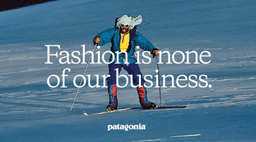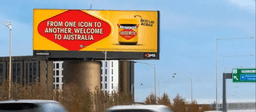A world in one sentence: Elevate media with creative writing
5/20/2025
You may have heard: Everyone’s a writer now. Whether this idea should ruffle your artistic feathers or should just be accepted in the age of ChatGPT, well, that’s a subject for another day. But writing copy—especially for digital and media—is a skill that, it seems, anyone can do.
And we’re not here to say you can’t. But we believe that writing copy for a digital world is more than just throwing an informative line or a strategic selling point into a social ad and calling it a day. It’s a process. It’s an art. It’s creative writing in miniature, thanks to the microscopic restrictions of ad placements. And that’s where the creative part comes in.
Story in seconds.
When you’re writing copy for spaces with predetermined specs, you can still reach beyond the merely functional. A 50-character limit isn’t a death sentence for ideas that stick with a user. So how do you bring life, feeling, place, feature, ROI, and everything else your client wants into a four-word headline or just seconds of airtime? Treat it like a creative writing exercise, not ad copy.
“But wait,” you say. “It is ad copy.” Yes. We know. And where many authors have pages (even chapters!) to build worlds, create characters, mount suspense, and engage readers, copywriters don’t have that luxury. So instead, we zoom in on human moments and draw from more than the strategy to demonstrate value, like relatable experiences or universal lessons. Make it funny or make it bold, but make it real.
Patagonia is a champion of short copy with outsized impact. This line makes it clear that the company’s business is great gear that works. For adventurers who don’t want to be held back by the elements, these six words say exactly the right thing.
With three words that play on a familiar phrase, Airbnb tells the busy social media user they have the perfect snow chalet for all of their après-ski activities.
A sensory experience.
Start by leaning on your senses. Drop your reader into the action with copy that they can experience from wherever they are—because they know what french fries smell like, what a leather steering wheel feels like, what a baby’s laugh sounds like. Once their senses are in play, ratchet up the experience by thinking about your copy like a cinematographer, whether it’s a video spot or not. Use copy to paint what you see, so your readers can see it too.
Four words. One sound effect (pop!). Copy that rolls off the tongue and sticks in your head.
The delicious image from Blue Bottle Coffee draws the eye, but it’s the headline that gives you a sense of place—and taste. New Orleans, wrapped in a reverie of brass bands and chicory coffee.
Team up.
Writing bestseller-quality copy in text-message-sized spaces also can occur when you lean into the assets and the placement itself. Brainstorm concepts with video editors and designers to create an immersive, emotional, and entertaining journey. Whether it’s a digital ad or a traditional print ad, look for ways to incorporate the physical placement itself—and tell a cohesive and interactive story.
When Taylor Swift was due to arrive in Australia, Vegemite secured this billboard, situated en route from the airport to downtown Melbourne. Anywhere else, this copy wouldn’t have worked—or been as culturally relevant.
When you’re picky with your words, choosing only the strongest and savviest, you need less time and space to express who you are, what you’re saying, and why anyone should care.
The bottom line.
Coming up with inventive work that’s effective within limited space will always be a challenge. But as marketers, we believe that if you shift the way you write to combine function and form, you have the power to freshen the digital landscape and avoid redundant placements and ad fatigue.
As creatives, finding new and unconventional ways to tell stories, make connections, crack jokes, and ultimately drive engagement is part of the fun, the challenge, and the privilege of making art every day.










